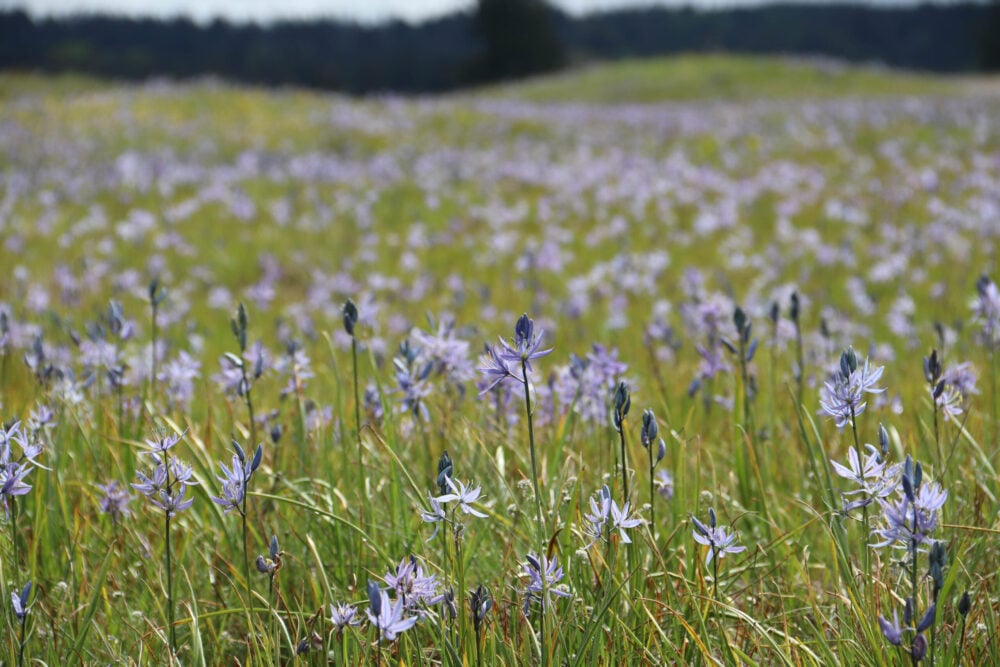

Contributor
- Topics: Archive, Garden Futurist
Dr Francesco Franceschi was an internationally respected horticulturist responsible for the introduction of an astounding list of plants to Santa Barbara and the West. Any garden designer in the region who seeks to create an everblooming scene today owes a debt to Franceschi. This is the first of a two-part article on his life, his work, and his legacy. A bibliography will appear in the next installment.

More than one hundred years ago, Dr Francesco Franceschi wrote of his desire to establish an acclimatizing garden not far from the city of Santa Barbara, California, where he lived with his wife, Cristina, and three of their six children. Here he could pursue his passion for testing the suitability of plants from around the world to the mediterranean climate conditions of California. Acclimatizing was a relatively new kind of horticultural experimentation in Europe, where Franceschi had been born into a wealthy family in Florence, Italy in 1843. His name at birth was Emanuele Orazio Fenzi, and he had already become an important Italian horticultural figure before he changed his name to Franceschi and moved to the United States. He soon became a significant American horticulturist, contributing to the botanical literature and altering California’s landscape through his numerous plant introductions. After twenty years in Santa Barbara, he returned to Italy, resumed using the name Fenzi, and moved to what was then the Italian colony of Libya in North Africa. His impact on that landscape was probably even greater than his impact in California, because he planted thousands of eucalyptus, was among the first to introduce and propagate exotic plants, and helped initiate a modern agriculture program for the country. Seven years after his death in Libya in 1924, a portion of his Santa Barbara property was designated Franceschi Park.
Raised by his paternal grandfather at Palazzo Fenzi in Florence following the death of his parents, young Fenzi loved botany and horticulture. He followed his grandfather’s wishes by attending the University of Pisa and devoting part of himself to the family business of banking and railroad development; but he used his considerable financial resources to make the family’s summer residence (Villa Sant’Andrea in the Val di Pesa’s San Casciano, south of Florence), into a veritable botanical garden. Fascination with horticulture was common in the nineteenth century, but Fenzi was clearly far from average. He contributed to publications such as The Gardeners’ Chronicle in London, served as secretary and then president of the Royal Tuscan Society of Horticulture, was the secretary of the Florence International Agriculture Exposition in 1874, and was jury president at the 1886 Rome Exposition. He introduced bamboo into Italy and, for its winter flowers, bridal veil broom (Genista monosperma).

Drawn to California
Fenzi was attracted to Southern California by the similarity of its climate to that of the Italian Riviera and decided to move to Los Angeles following the loss of the family fortune during an economic crisis in Italy. Leaving three children behind with relatives, he and Cristina took their oldest daughter and their two youngest sons and set sail for America in 1891 with Cristina’s dowry as their sole source of funds. Retaining only the title Doctor (a reference to his Doctor of Laws degree), he began his new life with a new name: Francesco Franceschi.
Under this pseudonym he would write numerous articles, essays, and nursery catalogs, make a substantial contribution to Bailey’s Cyclopedia of American Horticulture (the forerunner of Hortus Third), collaborate with David Fairchild for the US Department of Agriculture’s Office of Foreign Seed and Plant Introduction, publish a definitive book on Victorian-era gardens of the region (Santa Barbara Exotic Flora), and introduce about 200 new plants to California. He was the first to describe Franceschi palm (Brahea elegans), which was ultimately named for him.
Franceschi moved to Santa Barbara from Los Angeles in 1893 to establish the Southern California Acclimatizing Association (SCAA) with Charles Frederick Eaton, a gentleman farmer and landscape architect who later gained fame as an Arts and Crafts practitioner. They worked at Eaton’s Montecito estate, Rivo Riso, germinating seed from around the world to see if the plants would thrive in Santa Barbara’s mediterranean climate. Two price lists for their introductions were issued before they went their separate ways. The SCAA was the first California nursery to scientifically evaluate new plants for California’s climatic conditions. Franceschi later defined acclimatization as simply “to introduce plants from other countries having climate similar to ours, and, through appropriate culture, make them thrive and bear.”1 Unlike many horticulturists in Europe, he did not believe that he could “acclimatize” seedlings to be adapted far beyond their natural ranges of adaptability.
His partnership with Eaton ended about 1895, and Franceschi relocated the SCAA from Eaton’s estate to downtown Santa Barbara. There were several locations in the city for the SCAA, which Franceschi operated as both a research facility and as a retail nursery, where he was assisted by his daughter, Ernestina, by all accounts a talented horticulturist in her own right.

A New Site
In 1903 Francheschi’s wife purchased forty acres on Santa Barbara’s Mission Ridge. The property offered views of the Channel Islands and the mountains, faced south to the ocean, and, at about 800 feet above sea level, was virtually frost-free. They named it Montarioso (airy mountain) in the Italian villa tradition. It would become the site of Francheschi’s nursery and botanic garden and the couple’s home. Franceschi began by constructing a lath house. He laid out the grounds of Montarioso with specific design intent, not simply planting things haphazardly in the tradition of many nurserymen of the period. Plants (mainly seedlings and cuttings) were “picturesquely arranged but grouped in scientific order” for educational purposes. Only about ten of his forty acres were planted. His emphasis on horticultural specimens in an informal design was characteristic of the nineteenth century, but his botanical sensitivity provided the organizing device for this interpretation of the English picturesque landscape garden.

Franceschi described the plans for his “new botanic garden at Montarioso” in 1905, the same year that construction on the family house began. It was one of the first houses in the neighborhood, soon to be known as “the Riviera,” in part due to Franceschi’s efforts. While the garden looked to the nineteenth century, the design of the house was cutting-edge Craftsman style. Known today as Franceschi House, it was originally built of redwood and enlarged two years later.
Franceschi positioned both his garden and house to take full advantage of the spectacular setting. He had already established an orchard of fruits and nuts, and the entrance to the garden was marked by two groups of dragon trees (Dracaena draco), which were probably set out as rooted cuttings. His planting decisions were based on an analysis of the suitability of the microclimate, soil quality, and topography for each group of plants. An early advocate of drought-tolerant landscapes, Franceschi arranged to have water from the Spanish-era Mission reservoir pumped to his own reservoir. He located plants based upon how much water would be necessary to sustain them—not unlike our contemporary zone system of irrigation. His palm “amphitheatre” was named for the natural bowl in which he planted about one hundred species of palms, grown in his lath house from seed. Cactus, aloes, and agaves were planted on a rocky slope in full sun, while camellias, daphnes, and rhododendrons were clustered in the shelter of the coast live oaks (Quercus agrifolia) on the site. Acacias and other Australian flowering shrubs needing no irrigation were grouped together. He introduced lippia (Phyla nodiflora) as a groundcover for an alternative to the water-demanding lawns of the day. Franceschi’s particular interests included subtropical fruits, bamboos, olives, palms and plants of all kinds that might provide year-round flower color.

The Franceschi Myths
Several myths about Franceschi’s achievements are now firmly entrenched after years of repetition in print. The first is that the property that became Montarioso was barren and arid before he arrived. This reflects the attitudes of East Coast and European observers who tended to view the winter-wet, summer-dry coastal California landscape as deficient and desert-like (not to mention lacking in fall color.) Santa Barbara actually receives an average of seventeen inches of rain a year, which makes it only “semi-arid” in climatological terms. Drought years can be followed by El Nino-induced downpours, which dump as much as forty-seven inches of rain in one season. The property that his wife purchased had scattered native oaks and exotic eucalypts (Eucalyptus) rising above the natural coastal sage scrub vegetation; native wildflowers, such as brodiaeas or blue dicks (Dichelostemma capitatum) and shooting stars (Dodecatheon clevelandii subsp. insulare), dotted a groundcover of introduced annual grasses. Although much of the exotic (non-native) vegetation that he planted was drought-tolerant, most of it was green year-round, which created the effect of a lush and verdant garden, especially in the dry summer and fall months. Even today, after years of neglect, the property remain quite lush; portions, today, are clothed in the same coastal sage scrub, grasses, wildflowers, oaks, and eucalypts that Franceschi encountered as he developed the site.
The second and more persistent myth surrounding Franceschi is that he introduced 900 species of plants to the United States. No one has compared the nursery records from every location in the US, but when compiling his list of plant introductions to California, Harry Butterfield, of the University of California, Davis, did compare all the nursery catalogs he could find in the state.2 The mythical number of 900 began with Franceschi’s mistaken belief that many of the plants he raised from seed had never been grown before in California. In 1943, John Tucker tried to dispell this myth, stating that the claim of 900 introductions could not be accepted “at their face value.”3 He recognized that the exact number of plants that Franceschi introduced to the state is beside the point and will probably never be known. In the words of the eminent American horticulturist, David Fairchild, “…California owes much to [Franceschi’s] untiring interest and effort.”4

I am especially indebted to Warren E Fenzi, Franceschi’s grandson, who shared family albums, records, and memories with me. Although I was unable to personally meet with her, Ernestina Franceschi Fenzi, Franceschi’s granddaughter, was also an invaluable source of information, and I am grateful to her and to Laura Morrison who relayed many of Ernestina’s memories and translated from Italian for me. Thanks also to Karen Bartelt Adams, John Bleck, Carol Bornstein, Lauren Weiss Bricker, Edward Cella, Rick Closson, Dan Condon, Jeff Cope, Mary Louise Days, Billy Goodnick, Bill Grant, Laurie Hannah, Wendy Hawksworth, Clair Martin, Joel Michaelsen, Christine Palmer, David Postado, Michael Redmon, Caren Rager, Terri Sheridan, and Noel D Vernon.
[sidebar]
1 Dr. F. Franceschi, Fifteen Year Experience in Southern California, The Pacific Garden, December 1908, p. 9.
2 Harry M. Butterfield, Dates of Introduction of Trees and Shrubs to California,” a typewritten manuscript reproduced for the Landscape Horticulture Department at UC Davis, August, 1964.
3 John M. Tucker, Francesco Franceschi, Madroño 7:18-27 (January 1943).
4 David Fairchild, The World Was My Garden, New York, 1938, p. 120.
[/sidebar]
Plants Introduced by Dr Francesco Franceschi to California
As John M Tucker noted in 1943, “the total number of [Franceschi’s] new plant introductions is a debatable matter” because research has shown that many plants, thought by Franceschi (and those who compiled his papers) to be his introductions, had actually been introduced to California by other nurseries. Never-the-less, the list of Franceschi’s contributions to California’s landscape is lengthy and impressive. (Unfortunately, some of these exotics have proven to be invasive.) The plants listed below are mainly synthesized from “Dates of Introduction of Trees and Shrubs to California” by Harry M Butterfield, a typewritten manuscript prepared in 1964 after years of research for the Landscape Horticulture Department at the University of California at Davis. Not all types of plants were surveyed when the original comparative analysis of nursery records was done, and Franceschi’s special areas of expertise (succulents, palms, and bamboos) were not included.
This list is therefore only a partial record of plants introduced to California by Franceschi through his Southern California Acclimatizing Association nursery (taken over by Peter Riedel in 1909) or his subsequent Montarioso Nursery (operated by his daughter, Ernestina, and son, Camillo, so Franceschi could concentrate on the horticultural research.) Dates of introduction follow the plant names. It should be noted that Butterfield apparently did not have access to work Franceschi did in California prior to 1897. This list should therefore be considered the minimum number of plants Franceschi introduced.
A short list of Additional Plants has been assembled from other sources that did not conflict with Butterfield’s list, including Butterfield’s own article, Horticultural Activity in the Santa Barbara Area, California Horticultural Journal (April 1968), David Fairchild’s The World Was My Garden (1938), Victoria Padilla’s Southern California Gardens (1961), and John Tucker’s article, Francesco Franceschi, in Madroño (1943). These are followed by the authors’ names.
Plants noted with an “M” were, according to Butterfield, introduced through Franceschi’s Montarioso Nursery. Plants noted with an asterisk (*) have become significant elements of the contemporary California landscape. In brackets are the currently accepted names for plants that have been reclassified since Franceschi worked with them.
Trees (see also “Shrubs”)
Acacia pravissima, 1897
Ovens wattle
Acer oblongum, before 1900
Aglaia odorata, 1897
Aleurites fordi, 1908
Aleurites moluccana, 1897
candlenut tree
Aristotelia racemosa, 1897 [= A. serrata]
New Zealand wine berry
*Azara microphylla, 1911
boxleaf azara
Bauhinia forficata, 1911
Brazilian butterfly tree
*Bauhinia tomentosa, 1911
yellow bauhinia
*Bauhinia variegata, 1911
purple orchid tree
Bolusanthus speciosus, 1908
South African wisteria
Bursera simaruba, 1897
Butea frondosa, 1897 [= B. monosperma]
flame of the forest
Calodendrum capense, 1897
Cape chestnut
Castanospermum australe, 1897
Morton Bay chestnut
Casuarina equisetifolia, 1897
south sea ironwood
Casuarina torulosa, 1897
Cedrela dugesii, 1897
Cedrela fissilis, 1908
Cedrela odorata, 1897
Cedrela serrata, 1897
Cedrela toona, 1908
Celtis sinensis, 1897 [= Toona sinensis]
Chinese hackberry
*Chorisia speciosa, 1897
floss silk tree
Cinnamomum pedunculatum, 1908 [= C. japonicum]
Cinnamomum zeylanicum, 1897
cinnamon
Crinodendron dependens, 1908 [= C. patagua]
lily-of-the-valley tree
*Cupanea anacardioides, 1897 [= Cupaniopsis anacardioides]
carrotwood
Dombeya natalensis, 1908 [= D. tiliacea]
Dombeya punctata, 1908
Dombeya spectabilis, 1908
Erythrina corallodendrum, 1897
coral tree
Eucalyptus rudis, 1897
flooded gum
Eugenia dombeya, 1897 [= E. brasiliensis]
*Feijoa sellowiana, 1905 [= Acca sellowiana]
pineapple guava
Ficus benghalensis, 1897
Indian banyan
Ficus erecta, 1897
Ficus religiosa, 1897
Bo-tree
Ficus sycomorus, 1905
sycamore fig
*Fraxinus velutina, 1897
Arizona ash
Gmelina arborea, 1897
Gmelina asiatica, 1897
Harpephyllum caffrum, 1908
Ilex latifolia, 1897
tarajo
*Leucadendron argenteum, 1897
silver tree
Lithraea molleoides, 1897
Melia sempervirens, 1897 [= M. azederach]
Peltophorum inerme, 1897
*Persea indica, 1908
Phyllanthus acidus, 1897
gooseberry tree
Phytolacca dioica, 1897
ombu
Pinus gerardiana, 1905
Chilgoza pine
Pinus koraiensis, 1905
Korean pine
Pinus nepalensis, 1897
Pinus roxburghi, 1897
Chir pine
Pinus sinensis, 1897 [= P. massoniana]
Pittosporum heterophyllum, 1908
Pittosporum rhombifolium, 1897
Queensland pittosporum
*Pittosporum viridiflorum, 1908
Cape pittosporum
Protium serratum, 1897
Reevesia thyrsoidea, 1897
Schinus dependens, 1908 [= S. longifolius]
*Schinus terebinthifolius, 1897
Brazilian pepper
Sophora chrysophylla, 1908
mamane
Stenocarpus salignus, 1897
scrub beefwood
Stereospermum suaveolens, 1897 [= S. chelonoides]
Swietenia mahogani, 1897
Taxodium mucronatum, 1905
Montezuma cypress
*Tipuana tipu, 1897
tipu tree
Trema bracteolata, 1905 [= T. orientalis]
Widdringtonia whytei, 1897 [= W. nodiflora]
Mlanji cedar
Shrubs (and small trees under 20 feet)
*Abelia x grandiflora, 1914
glossy abelia
*Acacia baileyana, 1908
Bailey acacia, Cootamundra wattle
Acacia leptoclada, 1908
Acacia podalyriifolia, 1908
pearl acacia, Mt Morgan wattle
Acacia subulata, 1906
awl-leaf wattle
Acokanthara spectabilis, 1906 [= A. oblongifolia]
poison arrow plant
Allamanda williamsii, 1908
*Bauhinia tomentosa, 1908
yellow bauhinia
*Carissa grandiflora, 1908 [= C. macrocarpa]
natal plum
*Caryopteris incana, 1908
Cassia artemisioides, 1908 [= Senna artemisioides]
Clerodendrum x speciosum, 1908
Java glory bean
Clerodendrum tomentosum, 1908
lolly bush
Daubentonia tripetti, M 1912 [= Sesbania tripetii]
Myrtus ugni, 1900 [= Ugni molinae]
Chilean guava
Pittosporum phillyreoides, 1908
willow pittosporum, weeping pittosporum
*Pittosporum rhombifolium, 1900
Queensland pittosporum
*Solanum rantonnetii, 1908 [= Lycianthes rantonnetii]
Sparmannia africana, 1908
African linden, African hemp
*Teucrium fruticans, 1908
bush germander
Vines
*Aloe ciliaris, 1908
climbing aloe
Anemopaegma chamberlaynii, 1908
Anemopaegma purpureum, 1908 [= A. puberulum]
Artabotrys odoratissimus, 1897 [= A. hexapetalus]
Asparagus crispus, 1908
Asparagus scandens var. defloza, 1908
*Asparagus sprengeri, 1908 [= A. densiflorus Sprengeri group]
Asparagus virgatus, 1908
Billardiera scandens, M 1912
common apple berry
Bomarea caldasiana, 1908 [= B. caldasii]
Bougainvillea glabra ‘Sanderiana’, 1908
Bougainvillea lateritia, 1908 [= B. spectabilis ‘Laterita’]
Caesalpinia nuga, M 1912
Chlorocodon whitei, 1908
Cissus antarctica, 1908
kangaroo vine
*Cissus capensis, 1908 [= Rhoicissus capensis]
Cissus gongylodes, 1908
*Cissus hypoglauca, M 1912
Cissus incisa, 1908 [= C. trifoliata]
Cissus oblonga, M 1912
Cissus quadrangularis, 1908
*Cissus rhombifolia, 1908
grape ivy
Clematis crispa, 1908
marsh clematis
Clematis grata, 1908
Clematis paniculata, 1908
*Clytostoma callistegioides, 1908
violet trumpet vine
Convolvulus althaeoides, 1908
Dioclea glycinoides, 1908
*Distictis lactiflora, M 1912
Dolichandra cyanchoides, 1908
*Doxanthus unguis-cati, 1908 [Macfadyena unguis-cati]
cat’s claw vine
Eccremocarpus scaber var. coccineus, M 1912
*Felicia petiolata, 1912
Hidalgoa wercklei, 1908
Jacquemontia pentantha, 1912
Jasminum azoricum, 1908
Jasminum simplicifolium, 1908
Lardizabala biternata, 1908
Lonicera implexa, 1908
Minorca honeysuckle
Pandorea brycei, 1908 [= Podranea brycei]
*Passiflora jamesonii, 1908
Pithecoctenium cynanchoides, 1908
Pithecoctenium echinatum, 1908 [= P. crucigerum]
Quisqualis indica, M 1912
Rangoon creeper
Rhynchosia minima, 1908
Semele androgyna, 1908
climbing butcher’s broom
*Solandra nitida, M 1912 [= S. grandiflora]
*Solanum rantonnetii, 1908 [= Lycianthes rantonnetii]
Solanum seaforthianum, 1908
St Vincent lilac
Stigmaphyllon ciliatum, 1908
Stigmaphyllon littorale, 1908
*Thunbergia grandiflora, 1908
blue trumpet vine
*Wisteria floribunda, 1908
Japanese wisteria

Flowering Bulbs
*Alstroemeria aurantiaca, 1908 [= A. aurea]
*Alstroemeria ligtu, 1908
*Brodiaea uniflora, 1908 [= Ipheion uniflorum]
spring star flower
*Clivia miniata, 1908
*Crinum moorei, 1908
Crinum x powellii, M 1912
Hedychium coccineum, 1908
red ginger lily
*Hedychium coronarium, 1908
white ginger
*Hedychium gardnerianum, 1908
Kahili ginger
*Homeria collina, 1908
Additional Plants
Brachychiton populneus var. occidentalis (Butterfield)
Franceschi flame tree
Ceroxylon andicola [= C. alpinum] (Padilla)
Embothrium coccineum (Padilla)
Chilean flame tree
Epidendrum species and hybrids (Padilla)
Erythea elegans [= Brahea elegans]
Franceschi palm
*Lippia canescens/repens [= Phyla nodiflora]
lippia (Tucker)
*Lyonothamnus floribundus subsp. aspleniifolius (Tucker)
fernleaf Catalina ironwood
*Puya alpestris (Butterfield)
*Rosa ‘Belle of Portugal’ (‘Belle Portugaise’)
Rosa odorata var. gigantea [= R. gigantea] (Padilla)
*Cucurbita pepo (Fairchild)
zucchini squash
Plants Thought to be Introduced to the Santa Barbara by Dr Franceschi
Franceschi is credited with introducing more than 800 species of plants to the Santa Barbara landscape by Peter Riedel in his unfinished manuscript, Plants for Extra-Tropical Regions, posthumously published by the California Arboretum Foundation in 1957. (Riedel did not do a thorough comparative analysis, so his work might not hold up under further research; for example, some plants that Butterfield attributed to Franceschi were not noted as Franceschi introductions by Riedel.) In his 1984 book, Dr. F. Franceschi: Pioneer Plantsman, Will Beittel lists the plants that Riedel believed Franceschi introduced to the Santa Barbara area. Below is a sample of some of the most important plants from Beittel’s list; many had been previously introduced by other nurserymen elsewhere in California.
Abutilon megapotamicum
flowering maple
Acacia verticillata
star acacia
Actinidia chinensis
kiwi, Chinese gooseberry
Aristea ecklonii
Artemesia arborescens
Bambusa arundinacea
teastick bamboo
Banksia grandis
tall banksia
Beaumontia grandiflora
Easter lily vine
Buddleja davidii
butterfly bush
Butia capitata
pindo palm
Calliandra tweedii
Trinidad (Brazilian) flame bush
Calycanthus occidentalis
spice bush
Caryota urens
fishtail wine palm
Cassia fistula
crown of gold tree, golden shower tree
Ceanothus spinosus
Chrysalidocarpus lutescens [= Dypsis lutescens]
cane palm
Cistus ladanifer
crimson-spot rockrose
Clematis montana
Convolvulus mauritanicus [= C. sabatius]
ground morning glory
Cornus capitata
evergreen dogwood
Crataegus x lavallei
Carriere hawthorn
Cytisus canariensis [= Genista canariensis]
Canary Island broom
Cytisus scoparius
Scotch broom
Dierama pulcherrimum
fairy wand, wand flower
Dodonea viscosa
hopbush
Echium fastuosum [= E. candicans]
pride of Madeira
Elymus condensatus [= Leymus condensatus]
giant rye grass
Erythea brandegeei [= Brahea brandegeei]
San Jose hesper palm
Erythrina caffra
kaffirboom coral tree
Escallonia rubra var. glabriuscula
Festuca ovina glauca [= F. glauca]
blue fescue
Ficus retusa [= F. microcarpa]
Indian laurel fig
Ficus roxburghii [= F. auriculata]
Firmiana platanifolia [= F. simplex]
Chinese parasol tree
Gardenia thunbergia
white gardenia
Helichrysum petiolatum [= H. petiolare]
licorice plant
Hibiscus mutabilis
Confederate rose mallow
Hymenosporum flavum
sweetshade
Ilex paraguariensis
yerba mate
Incarvillea delavayi
Koelreuteria bipinnata
Chinese lantern tree
Lavandula stoechas
Spanish lavender
Leptospermum scoparium
New Zealand tea tree
Leucophyllum texanum [= L. frutescens]
Texas sage
Morea iridioides [= Dietes irioides]
fortnight lily
Myrsine africana
African boxwood
Ophiopogon japonicus
mondo grass
Phlomis fruticosa
Jerusalem sage
Podocarpus gracilior [= Afrocarpus gracilior]
fern pine
Schizostylis coccinea
crimson flag, kaffir lily
Senecio macroglossus
Kenya ivy, Natal ivy
Spathodea campanulata
African tulip tree
Templetonia retusa
coral bush
Share:
Social Media
Garden Futurist Podcast
Most Popular
Videos
Topics
Related Posts
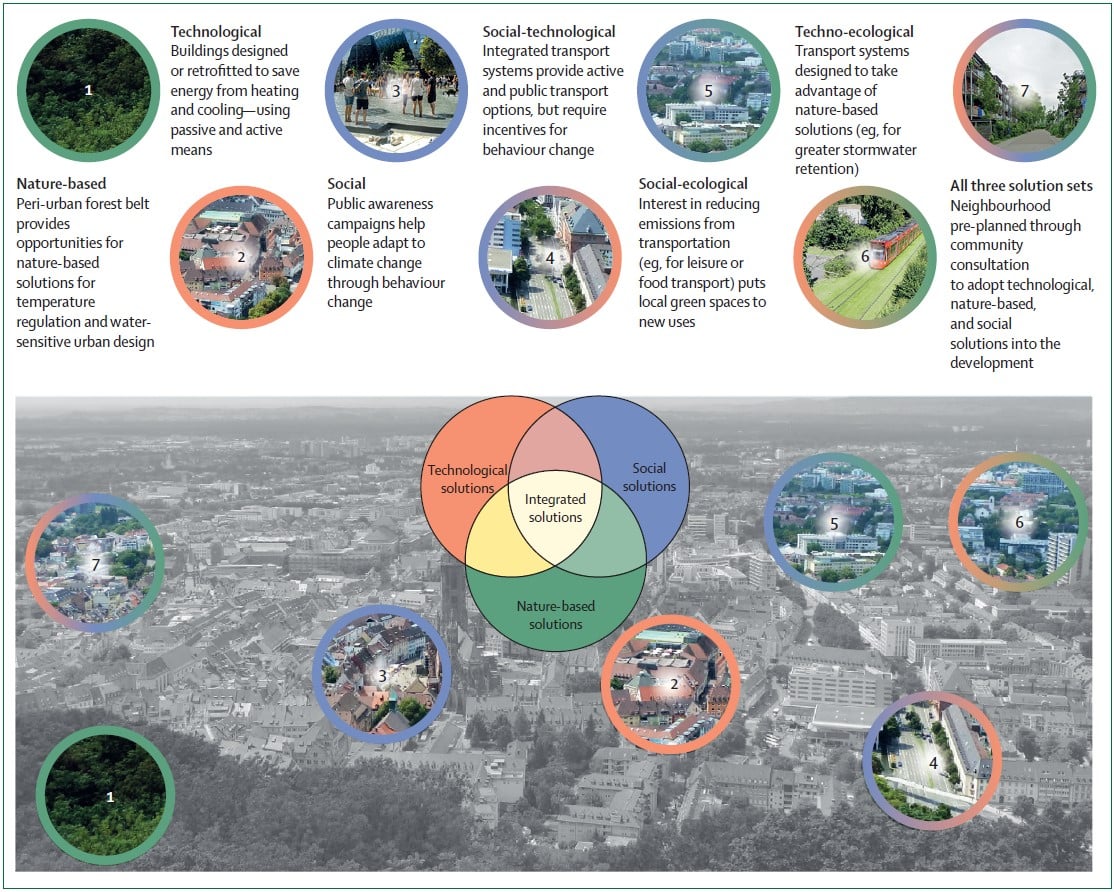
Ground Up Science for Greener Cities with Garden Futurist Dr. Alessandro Ossola
Spring 2023 Listen to the Podcast here. Alessandro Ossola is a scientist who gets very excited about the challenge of climate change allowing for an
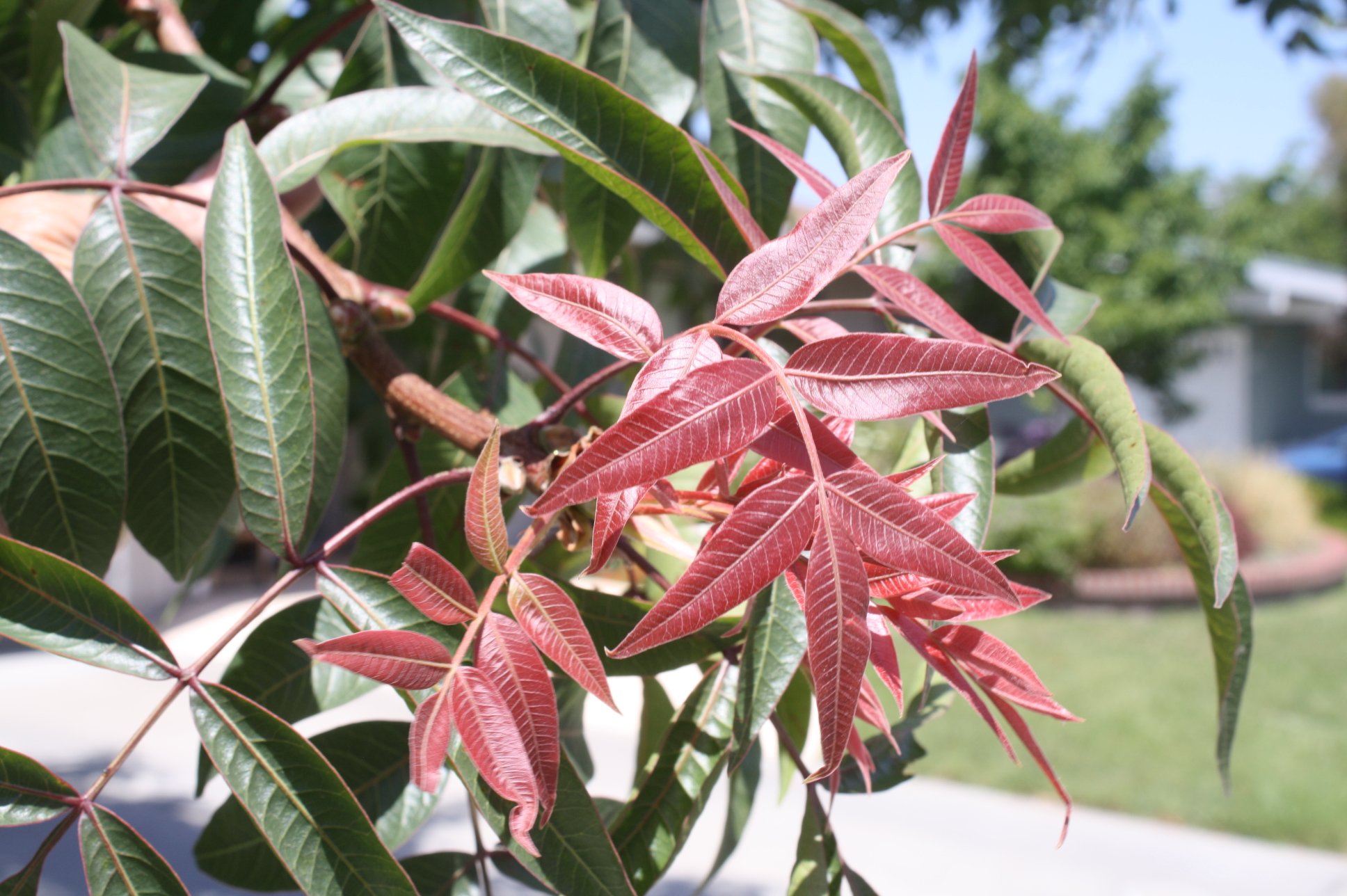
Readying Urban Forests for Climate Realities with Garden Futurist Dr. Greg McPherson
Winter 2023 Listen to the Podcast here. “Going from the mow and blow to a more horticulturally knowledgeable approach to maintaining the landscape. And that
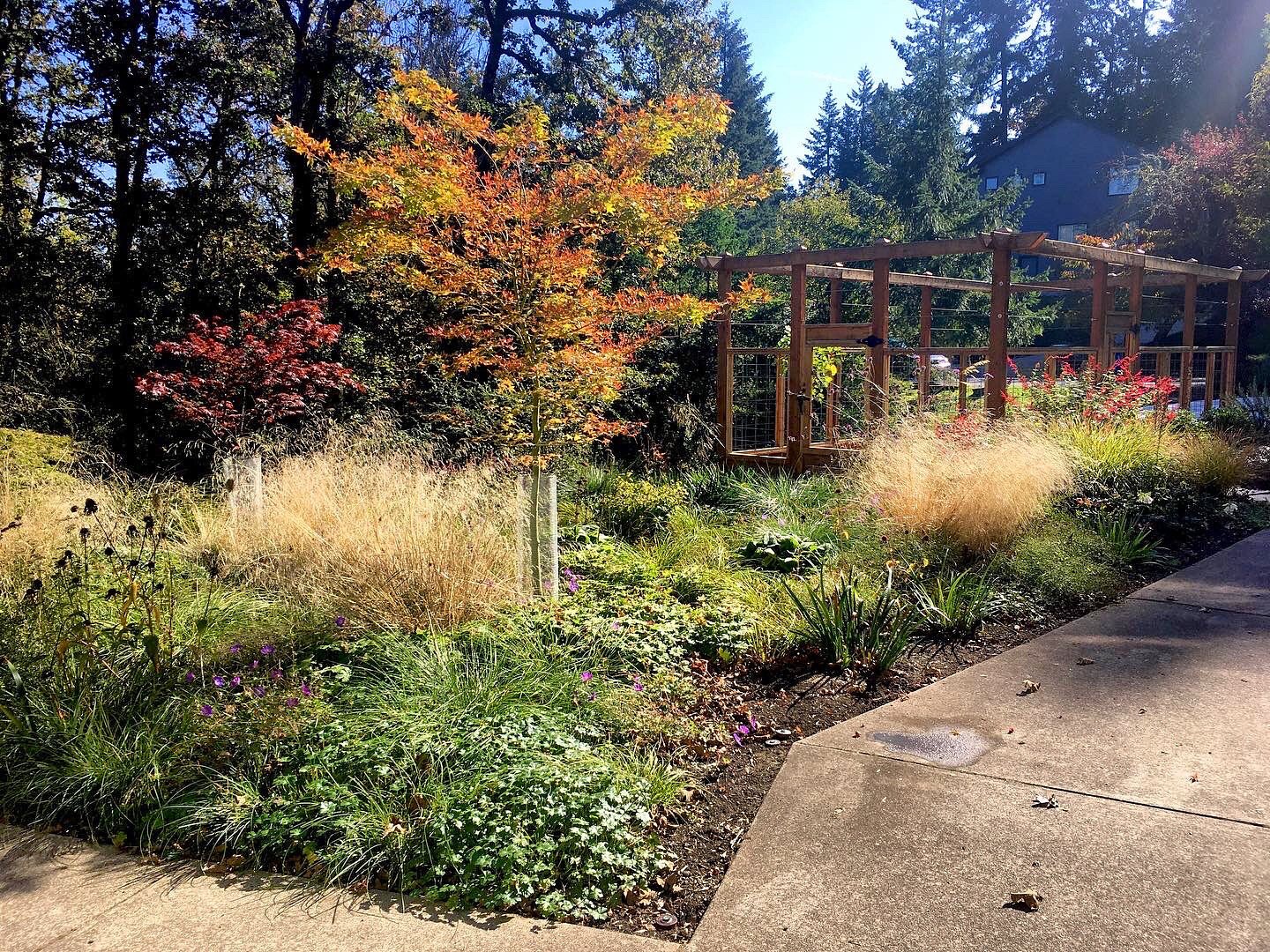
Low Maintenance Gardens – Better for Pollinators and People
Autumn 2022 “I come out every day. It’s therapy, my meditation.” Janet’s young garden transformed from overgrown, invasive plants to mostly natives. The dailiness of
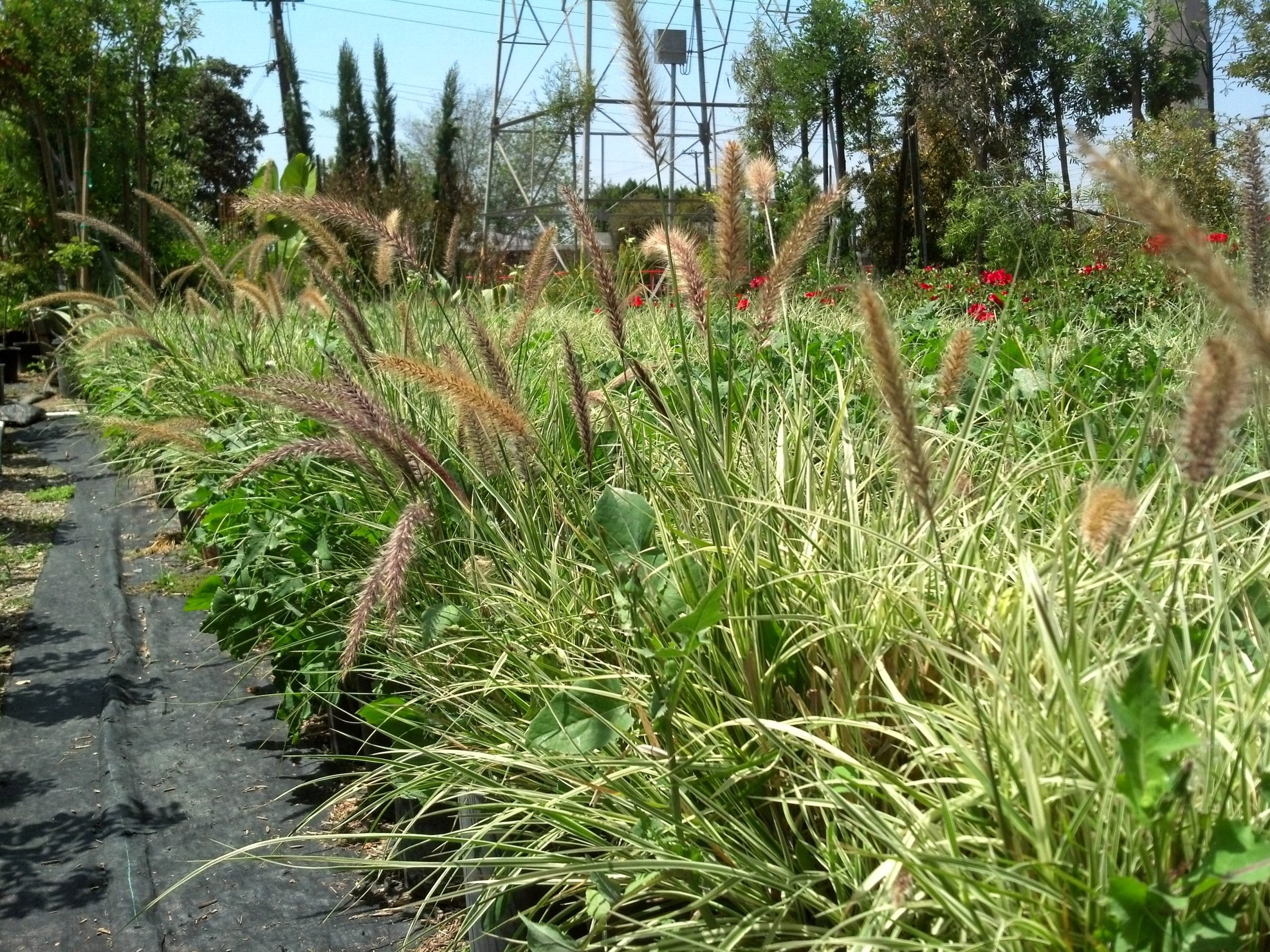
Invasive Plants Are Still Being Sold: Preventing Noxious Weeds in Your Landscape
Autumn 2022 With so many beautiful ornamental plant species and cultivars throughout California and the Pacific Northwest, how do you decide which ones to include




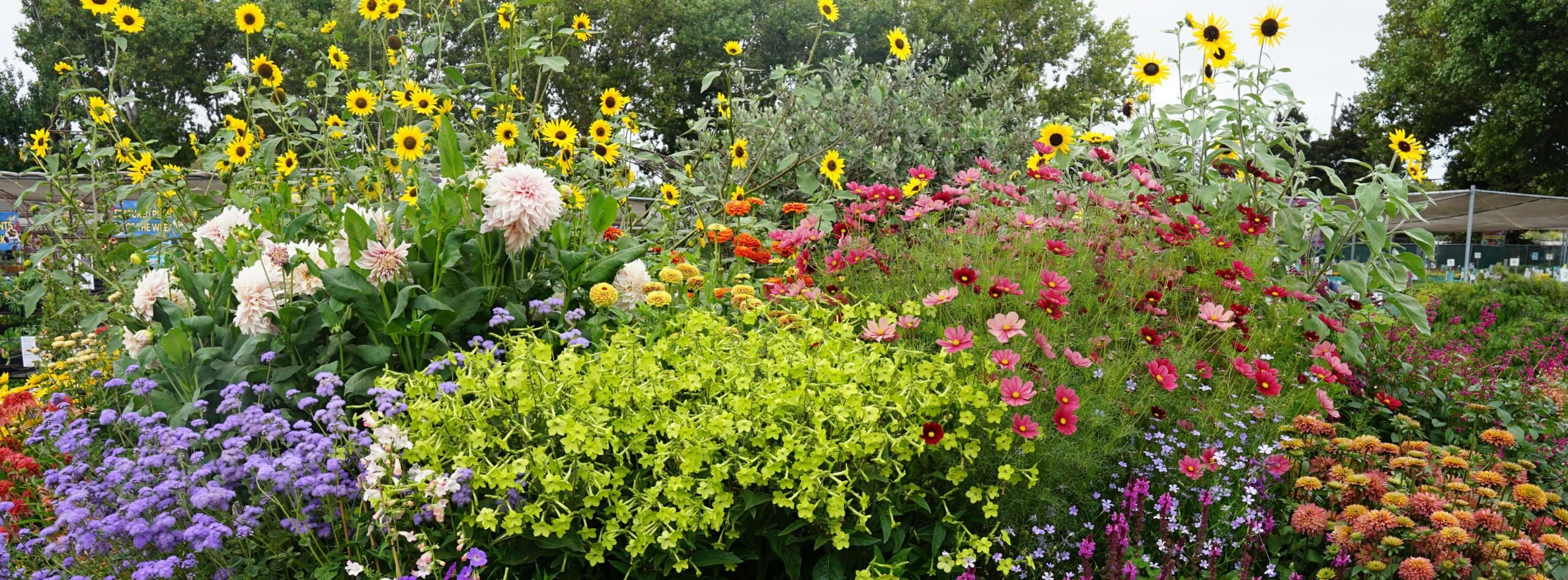

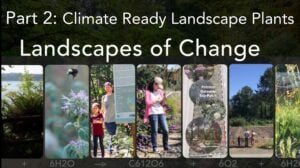

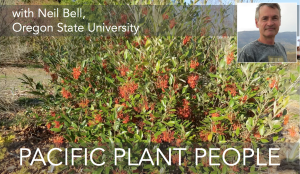
Responses